The product was provided to me free of charge for the review purpose in exchange for my honest opinion. The review was originally posted on my
blog, and now I would like to share it with my readers on Head-fi.
Manufacturer website:
Cayin, available from
MusicTeck and Amazon.
Intro.
When I saw N5ii spec for the very first time, I was a little surprised to find it having more in common with i5 than original N5. After receiving my review unit and placing it next to N5 and i5, I thought of calling it "iN5ii"

There is no other way for me to describe the new N5ii DAP from Cayin but to call it as a crossover between these two models, picking up a balanced output and dual uSD cards from N5 and a nearly identical Hiby GUI and customized Android 5.1 with a touch screen and a similar volume wheel from i5. Along with a sticker price of $369, Cayin packed N5ii with lots of goodies, pushing the envelope of its price/performance ratio even further.
This new release enters a space in mid-fi market which is currently the most saturated when it comes to DAPs. It's a space where audio enthusiasts want something small and compact on the go, but with more power and more features to set it apart from entry level models (like Cayin N3) and without high expectations of summit-fi performance, something which Cayin is overdue for (how about the next flagship model?).
I remember when Cayin told me about their original plan of keeping N-models as non-Android based, while i-models will be Android based. N5ii is a crossover between N5 and i5, which looks like a "hybrid" on paper. But does it perform like one? I spent the last month using N5ii DAP (w/2.1en firmware), and here is what I found.
 Unboxing.
Unboxing.
Many companies put a lot of thought into packaging. I appreciate that, thus wanting to highlight it in my unboxing section. In case of N5ii, the outside sleeve is all black with a front featuring a glossy outline of the DAP with a focus on a volume wheel. Hi-Res Audio sticker in the lower left corner is the only touch of color in there. Flipping it on the back reveals detailed highlights of the design which is quite impressive.
The actual storage box underneath the sleeve is all black, with a company name and audio waveform logo in silver. Once a magnetic cover is lifted, you will find a user guide in the pocket under the cover, and the DAP wedged in a secure foam cutout, right next to the storage pocket with accessories.





 Accessories.
Accessories.
Already pre-installed, N5ii has a tempered glass screen protector which is always good to have when dealing with a touch screen DAP. While film screen protectors keep scratches away, tempered glass usually shatters on direct impact, offering a real protection of the glass display.



You will also find a silicone protection case, a grey-ish rubbery semi-translucent case. It doesn't look too cheap or feels stretchable like some other dust/lint magnet silicone cases, and it does enhance the grip while keeping all the ports open. But it's not as premium looking as Cayin's optional "crocodile" pattern case you’ll find on Amazon or directly from MusicTeck. Yes, the case will set you back $30, but it fits like a glove, has a soft inner lining, distinct red stitching around the back, quality finish, and precise cutouts around the ports and volume wheel. Personally, I recommend upgrading to this case.
Stock case.


 Optional upgrade case.
Optional upgrade case.





Another optional accessory is Cayin CS-30TCR usb-C to coax cable (to connect to external DAC/amp) and Cayin CS-40TC35 (intended for 3.5mm coax input DAC/amp like Chord Mojo or Hugo 2). The cables have a quality build and extra shielding to cut the interference. Since N5ii doesn't have S/PDIF direct output, these cables are necessary if you are planning to use this DAP as a transport to drive external DAC/amp. Both cables available directly from MusicTeck.



You should also expect to find usb-C to usb cable for charging, data transfer, and usb-dac connection, though it was "apple" white, instead of a "traditional" black usb cable. Either way, this cable will be easy to spot among all your other usb-c and micro-usb cables, though the cable jacket felt not as solid. Also, included were 2 extra Hi-Res Audio stickers.
Design.
From my previous experience of reviewing N6, N5, i5, N3, and now N5ii, I find that Cayin always tries to come up with an original design which makes them stand out from the crowd of saturated DAP market. Of course, what’s under the hood should count the most, but as they say – you only get one chance to make a first impression. With non-Android DAPs you have more room and more freedom to customize controls and chassis. When you are dealing with Android based design and full touch screen interface, it leaves you with very little room for extra design elements, so you need to be more creative. In my opinion, with i5 the focus of the design was their threaded cylindrical volume knob, which is scaled down and carried over to N5ii.
According to Cayin, N5ii is 9% smaller and 24% lighter then i5, and indeed, with dimensions of 115mm x 57mm x 15.3mm and approximately 150g in weight – it’s a very compact and pocket friendly DAP. With a very thin bezel around side and bottom edges, majority of the front panel is occupied by 3.65” touch screen. The top of the chassis above the display extends with a volume wheel in the upper right corner, guarded around the corner by chassis frame, instead of being exposed like in i5. N5ii unit had a volume wheel with a noticeable resistance and a click-feedback as you turn it with every adjustment step. Though the resistance of the wheel wasn't too tight, I still found it more comfortable to turn with 2 fingers.
The metal part of the front chassis has a brushed aluminum anodized finish, while all the way around the sides and the top/bottom I found a sandblasted finish which gave CNC aluminum chassis an extra non-slip grip and a very pleasant to the touch feel. The back has a glass panel with a laser etched pattern underneath, which could be slippery especially when you place it on the surface, but when you hold N5ii naked in your hand, that slippery back is compensated by a non-slip sandblasted grip of side panels. But either way, using N5ii with a case is a good idea, and that optional “crocodile pattern” pleather case is pretty good and doesn’t hide the design elements of the DAP.
Starting from the left side, you have a small aluminum power button at the top with a corresponding etched symbol. On the right side, at the top you have transport control buttons with 3 evenly spaced small aluminum buttons where you have Play/Pause in the middle and Skip Next/Prev around it. Though buttons are small, they have plenty of distance in between to make sure your fingers don’t press two at a time. Down below the right side you have 2 spring-loaded uSD slots. The bottom has multi-functional USB-C port, used for charging, data transfer, USB DAC/amp input, and Digital Out output. The top, besides a volume wheel which is accessible from the front/back, also has 2.5mm BAL headphone out and 3.5mm SE headphone output which is also shared with Line Out port.
The front display panel also hosts a small charging LED in the upper right corner, and all the way at the bottom in the middle there is a touch “home” button which has a dual functionality of Go-Back with a single tap or Go-to-Home screen with a longer touch’n’hold.







 Under the hood.
Under the hood.
N5ii packs quite a lot for a mid-fi DAP in its price range. Before looking “under the hood”, the first impression comes from its 3.65” TFT IPS touch screen display with 845x480 resolution. It’s an adequate capacitive touch screen display for navigation of N5ii GUI, viewing embedded artwork of your songs, and running various apps. Also, since it’s IPS based, it has pretty good viewing angles. Does the display crisp enough and has vibrant colors to watch a high res videos or to play demanding games? Not really. In my opinion, with its Rockchip RK3188 processor and 1G of DDR3 RMA it’s probably not a good idea to run anything too CPU/graphic intense. It has a very capable quad-core ARM Cortex A9 processor with a quad-core Mali-400MP4 GPU, but it’s not intended to perform on par with your latest smartphone.
Furthermore, in this design Cayin decided to implement ESS9018K2M DAC along with a selection of high grade TI SoundPlus Audio OpAmps, a pair of OPA1622 for Left/Right channel current to voltage conversion and 3 individual OPA1622 where one is used for single-ended amplification and other two used for balanced output amplification. The design uses separate OpAmp components to keep SE and BAL parts of the circuit isolated and optimized for the best performance. Also, to reduce the jitter when handling different sampling rates, Cayin implemented three separate precision oscillators, covering multiples of 44.1kHz, 48kHz, and DSD signals. Altogether, the hardware can handle majority of lossy or lossless formats from mp3, wma, aac, ogg, ape, alac, flac, aif, wave, and all the way to sacd-iso and decoding up to DSD256.
While running customized Android 5.1, you get a support of BT4.1 and WiFi, and Google Play comes pre-loaded already, so you don’t need to side-load apks of your desired apps. Along with internal 32GB of storage, some of which as expected will be allocated to Android OS, continuing with a tradition of the original N5 you will get 2x uSD cards, supporting up to 400GB each. So, in theory you can have up to 832GB of storage space. More can be added through OTG USB connection, but for a portable use 2 uSD cards can offer plenty of storage, especially if you have a collection of high res FLAC/DSD files.
Internal battery capacity is 3000mAh, which could be charged fully within 3+ hours when using 2A usb wall charger. Cayin is staying consistent with their other designs, continuing using usb-c connector. In terms of a battery performance, I was driving IE800S from BAL output at a regular listening volume level, with medium gain, and audio priority mode enabled, and the uninterrupted playback lasted
11.5 hrs. I consider this as a best-case scenario since I was playing mp3 track. Switching to high res files, at a higher gain, and with more demanding headphones will reduce the battery life, as expected.
In terms of the actual headphone outputs, N5ii packs a punch with SE 3.5mm output rated at 150mW (32ohm load) with <0.4 ohm impedance and BAL 2.5mm output rated at 250mW (32ohm load) with <0.6 ohm impedance. 3.5mm output can also be switched to Line Out with 2V output level. Both headphone outputs have SNR spec of about 116dB-117dB, with a decent dynamic range and a black noise floor, more about it in sound analysis and pair up sections of the review.
Last, but not least, I would like to mention Audio Priority Mode. Not exactly a hardware feature, but a very useful “shortcut” you select from Notification bar to maximize audio performance by disabling WiFi, Bluetooth, shutting down 3rd party apps, and optimizing Android OS by turning off some of the background processes. It’s almost like a hardware acceleration mode to boost audio performance of N5ii. The only concern here, selecting AP Mode also disables EQ which needs to be enabled in future fw updates.
 Wired/wireless connections.
Bluetooth/Wireless.
Wired/wireless connections.
Bluetooth/Wireless.
For this test I used N5ii and my aging Galaxy Note 4 phone with Senns Momentum over-ears M2 wireless headphones. With N5ii, I was able to listen to headphones without a problem 28ft away from N5ii, while 34ft away from my Note 4 phone. When comparing the wireless sound quality between N5ii and Note 4, I hear Note 4 to have a fuller body with more bass, while N5ii sounds a little thinner in comparison. Perhaps a difference is due to a lack of aptX encoding support in N5ii.

 Digital out.
Digital out.
Using optional CS-30TCR usb-C to coax cable, I had no issues connecting N5ii to SPDIF input of that Micro iDSD BL DAC/amp. You can only use volume control on Micro iDSD, and the sound was very transparent, a typical Micro iDSD sound signature, no distortion or interference noise. I found it to be a flawless pair up with N5ii as a digital transport source.

Next, I tested digital out using usb-c to micro-usb cable (Shanling L2 cable), connecting N5ii to Oppo HA-2 DAC/amp. Once connected, HA-2 was recognized and the message popped up asking to allow Cayin Audio app to access USB device. Some of my cheap eBay cables didn't work, L2 is high quality and always works. And again, it was a flawless transparent pair up with N5ii as a digital transport source, and I was able to use volume control from HA-2 only.

 Analog out.
Analog out.
In this test I used N5ii Line Out to FiiO E12A (my transparent portable amp used for testing since Cayin's own C5 colors the sound a bit). When comparing N5ii PO vs LO+E12A, I hear the direct sound from N5ii to be a little brighter and more revealing vs N5ii+E12A to have a little smoother body and deeper sub-bass extension. This suggests that internal head-amp section of N5ii makes sound a little brighter and more revealing.

 USB DAC.
USB DAC.
In this test I used ThinkPad T470 with Win10, and installed the latest Cayin USB Audio drivers v4.35.0. Driver install was headache free, N5ii was quickly recognized by my laptop, I found that I'm able to use a volume control from laptop and DAP, and also the sound quality was similar to standalone DAP performance.
 GUI.
GUI.
With a modified Android 5.1 running in the background, the main interface of N5ii is Hiby audio app, thus once you boot up N5ii, it looks more like a DAP with a dedicated audio interface rather than a smartphone. You are greeted with a main page (top-most Music tab) and Folder view with options to access internal memory, micro-SD cards, or OTG storage. Next to the top Music tab, you have List with favorites, frequently and recently played songs, and playlist. Then, Private Cloud for LAN connection, and Search which brings up QERTY android keyboard (like in a smartphone). Under Music tab, you can also sort by Album, Artist, Genre, and Tracks.
I typically use folder view as my default because I have many loose songs and not too many albums (mostly compilations). Plus, not everything is properly tagged, but when I click on Album all of them show up as a separate thumb with corresponding embedded artwork and number of tracks in the album; while single songs show up as 1-track album, and the rest is under Unknown. Clicking on Artist brings up a list with every artist, and when you click on each, it shows separate songs and albums under that artist. Clicking on Genres, bring up thumbs with common genres (most of mine under pop and dance and classic). Clicking on Tracks brings all the songs in alphanumeric order.
Swiping notification bar down (typical Android feature), gives you a quick access to WiFi, Bluetooth, Gain setting, PO/LO (headphone vs line out for 3.5mm port), enabling Audio Priority mode, USB-C Mode (between USB, MTP, and DAC modes), Idle shutdown, and Scheduled power off. At the bottom, you can also adjust the brightness level of the screen and the screen time out, as well as being able to access the full Android Settings menu by clicking in the upper right corner Setting Icon, right next to battery indicator with an exact percentage of capacity. Those with Android phones will feel right at home, while iOS users will need to spend a little bit of time getting used to it.
Swiping the main screen to the right, reveals more Setting options for Music scan (scan all or the specified folder), a very detailed Music Settings (gain, digital filter, DSD gain compensation, SPDIF Out, Play through folder, Start up and max volume, channel balance, breakpoint resume, gapless, album art, and lyrics display), Equalizer (10band paragraphic EQ with 31/62/125/250/500/1k/2k/4k/8k/16k bands and a few genre-specific presets), Third-party applications (Google Play store and other installed apps), Smart Cleaning (to terminate running application), Download path/manager, Sleep Time/Scheduled Power off, and About section (useful to check your fw version).
As I mentioned already, this is not a typical open Android interface, but a Hiby audio player interface on top of Android which you need to access to get to the apps, including Google Play store. I have installed a handful of apps, such as Spotify and some games. Everything seems to be working, though I do want to note that download is not the fastest, thus I still prefer manual FW updates. I use free Spotify and found no issues with streaming, it was up and running in seconds. But as I mentioned before, we are dealing with only 1GB of RAM and not the fastest processor/GPU intended for more demanding apps. So, you got to have realistic expectations. But in general, it’s a relatively fast touch screen interface for an audio player, just don’t expect it to fly like your smartphone.
Another thing to note, with Android support, users are tapping into 3rd party apps which can slow down or crash Android OS, something which is not under control of Cayin or Hiby. Thus, it becomes a double edge sword. Customers are asking for streaming, so manufacturers build their OS on Android platform. But that also opens a can of worms with people installing various apps which are not under control of the manufacturer and when something doesn't work, manufacturer gets blamed.






But one of the thing they are in control of is the main DAP interface, especially in Audio Priority Mode where apps and many background processes are disabled to optimize the performance. The main Playback screen has a clear layout with upper top half of the screen independent of selected theme, where you can see a song artwork (if one is embedded) which could be switched to lyrics view (if available with a song) or a very elegant vertical Stereo VU Meter. Underneath you have selection of controls with different loop modes (single, repeat, random, etc.), access to EQ, view the list of songs in a current playback folder, and being able to add to favorites. Also, a display of a song/artist name and playback controls with Skip Next/Prev and Play/Pause. But the layout of all these controls will vary, depending on Theme selection, a little shirt icon in the lower left corner of the artwork screen of the display.
I do like the layout and graphics of Theme #1, the original theme from i5, but the fast-forward circular bar wasn’t as useful since my thumb covers it up without being able to see the time marker. Theme #2 is nice except that fast-forward scrub bar is right underneath of song artwork/lyrics/VU meter section where sometimes it's hard to see the actual bar. On a few occasions when fast-forwarding through a song, I end up swiping to the lyrics screen. I like Theme #3 the best except that I would like the graphics for Play and Skip buttons to be updated with something better defined because those buttons are not easy to see due to inner shadow. Of course, these are minor details, based on my personal preferences.
My only comment here, I wish Cayin/Hiby would have the main Playback screen as their default Home view. Everything else should be accessible by going into Settings or another Menu. Otherwise, it gets a little confusing when you are greeted with a Music/Folder view (with memory/card/OTG shortcuts) every time you start N5ii.


 Sound analysis.
Sound analysis.
I usually find a sound signature of the DAP is easier to describe when talking about its comparison to other sources or pair up with different headphones. But you can still come to a reasonable conclusion about individual sound performance of the DAP, derived from these comparisons.
N5ii tonality, though closer to neutral, leans more toward a brighter and a more revealing side. Don't expect a big bass impact or mids with a warmer fuller body. The sound is lean and a little on a colder side. It certainly is crisp and detailed with a wide soundstage, a nice dynamic expansion, and a sense of air between the layers of the sound. It pair ups great with neutral and warmer tuned headphones, and at the same time doesn't make brighter tuned one’s sound too harsh, though there were a few exceptions I mentioned in my pair-up analysis section of the review.
One interesting observation I found is between 3.5mm Single Ended vs 2.5mm Balanced outputs of N5ii. When comparing these outputs, though not necessary night'n'day difference, I do hear BAL output to be a little leaner in tonality, especially in lower mids, including a little less mid-bass impact and more sparkle in treble. This difference in tonality gives you an option to fine-tune the sound which comes in handy when dealing with different sound signature headphones and trying to find the best pair up synergy.
 Comparison.
Comparison.
In the following comparisons, I put N5ii against other DAPs in similar price/performance categories. While using different IEMs for my analysis, I always try to volume match between sources.
N5ii vs i5 - when comparing the soundstage, I hear N5ii SE to be very close to i5, but when you switch to N5ii BAL, the soundstage has a wider expansion. When comparing sound tonality, need to take SE vs BAL into consideration as well. N5ii BAL is more neutral in tonality with a leaner low end and lower mids and more revealing upper mids and airier sparkly treble when compared to a fuller body i5 with a smoother upper mids/treble where you also have a little stronger mid-bass impact. But when you compare N5ii SE to i5, N5ii is closer in tonality because it has a little more body in lower mids and a touch stronger bass impact, through it's still more revealing in upper mids and has a little more sparkle in treble. Also, N5ii background is blacker with a minimum hissing when it comes to sensitive IEMs, while i5 has more hissing. Both have identical GUI interface, touch screen, support of BT and WiFi, and access to Google Play store and apps. From hw perspective, N5ii has 2x uSD cards (vs one in i5) and a balanced output (vs only SE in i5). N5ii also has smaller footprint.
N5ii vs N5 - based on comparison of BAL outputs, ii has a wider soundstage expansion and overall sound is more transparent, more layered, and with better dynamics. Also, ii blacker background with nearly zero hissing is a big step up from the original N5 where noise floor with sensitive iems was always an issue. In terms of overall tonality, N5ii has a more neutral leaner sound while N5 has more body and sounds smoother in tonality, also with a little less airiness in sound. While tonality improvement is a subjective thing, perhaps if you want a stronger bass impact and a smoother fuller body sound, you might prefer the original N5, but in terms of the design there is no question that N5ii is head'n'shoulders above its original predecessor where instead of small screen and all physical button and wheel navigation now you have a responsive touchscreen with external hw playback controls, a physical volume wheel, BT with wireless headphones support and WiFi with access to Google Play and various streaming apps. The footprint of N5ii is smaller and you also have 32GB of internal memory in addition to 2x uSD, while N5 only has dual uSD cards.

 N5ii vs Opus#1S
N5ii vs Opus#1S - 1S soundstage is just a tiny bit wider in comparison to N5ii; both are hiss-free and have a solid black background with a low noise floor; 1S tonality is even more neutral while N5ii has a little more body in comparison; in terms of a dynamic expansion, I hear 1S just a tiny bit better, but it's a very small gap. Both have the same internal 32GB storage and external dual uSD, and both have a balanced 2.5mm. While the sound quality is close, the biggest difference is N5ii having Bluetooth (wireless headphones connection) and WiFi with access to Play store and streaming apps. The gap between N5ii and the original Opus#1 is a lot bigger, while #1S closed the gap in sound quality, but still behind in features where N5ii has an edge.
N5ii vs X5iii - N5ii soundstage is a little bit wider, but the first thing you notice right away is a black hiss-free background in comparison to a rather noisy and hissing background of X5iii when testing with sensitive iems. There are also differences in tonality with N5ii being more neutral, more transparent, more layered, and having a better dynamics expansion in comparison to a smoother, fuller body, more musical, and slightly more compressed in dynamics sound of X5iii. Both have the same internal storage and dual uSD expansion, volume wheel and hw playback controls, as well as support of BT/wireless and WiFi with Google Play support. Besides sound quality difference where N5ii has an upper hand, another big difference is FiiO offering a full open Android experience with a bigger higher quality display and a typical Android-smartphone type of navigation, while N5ii still has Android experience that feels as an add-on, "hidden" out of sight.
N5ii vs M3S - Here the gap in sound quality is not too far off. While testing and comparing BAL outputs, I hear N5ii to have just slightly wider soundstage and a little better dynamic expansion. In terms of tonality, N5ii is just a little leaner while M3S has a bit fuller body, but in general they are very close. With sensitive IEMs, I hear a bit more hissing with M3S, but it's not too bad. While M3S only has one external uSD card, N5ii offers internal memory and 2 uSD cards. Both have BAL output and external hw playback controls as well as a physical volume wheel. Also, both have Bluetooth for pair up with wireless headphones, plus M3S has access to HibyLink. One big difference is N5ii having a touch screen while M3S doesn’t. Plus, N5ii supports WiFi and Android along with Google Play store which gives you access to apps, including streaming apps while M3S can only "stream" music by means of HibyLink connection to a smartphone.
N5ii vs DX80 - It has been awhile since I used DX80, figured will be an interesting comparison with N5ii. Here, I hear N5ii having a little wider soundstage expansion and a more neutral tonality while DX80 has a little fuller body, north of neutral, with a little smoother tonality, though both have a similar presentation of sparkly airy treble. Also, N5ii has a little better dynamic expansion. With sensitive iems, there is a lot more hissing when it comes to DX80, while N5ii has a blacker background. While DX80 has a touch screen, physical playback buttons, and a dual uSD card, N5ii adds an internal memory, volume wheel, BT/wireless support, BAL out, and WiFi with Android and app support.
N5ii vs R6 - I have been asked by a few people about this comparison, so why not. Obviously, the big difference here is output impedance where the sound will be affected if you are using some multi-BA IEMs, like, for example, U18t I was using in my sound test. It's not a showstopper since an impedance adapter, such as iEMatch, does a great job to “correct” R6, and that's what I have been using in this comparison. When you even out the output impedance ground, it makes an interesting comparison where I found tonality to be similar, including a very similar soundstage expansion and black hiss-free background. Of course, there will be some variations depending on pair up with different iems and full-size headphones, but if you add iEMatch into the equation, I found a lot of similarities in tonality and sound presentation, though R6 has a little edge in layering, separation, and transparency of the sound. Besides output impedance, the biggest difference here is Android interface where R6 feels like a smartphone with a higher quality display and a very snappy Android performance. In contrast, N5ii presents itself as DAP first and Android device with Google Play and streaming capability second, like an add-on. Also, N5ii has an advantage of a dual uSD versus a single card in R6.
 Pair up.
Pair up.
In this test I only used a medium gain setting, and noted Volume level. In the below write up, please pay attention to SE (3.5mm) vs BAL (2.5mm) since BAL has a higher gain, thus a lower volume.
Audio-Technica ATH-R70x (open back, 470 ohm), SE v81 - very crisp detailed sound with an expanded soundstage. It took me by surprise, since I'm used to hearing a smoother sound when it comes to R70x. Here is was faster, righter, sharper, crisper. I did notice a little less sub-bass, and faster attack of mid-bass, neutral revealing mids, crisp airy treble.
Audeze EL8C (planar magnetic), SE v70 - no metallic sheen!!! that's the first thing I look for when pairing up EL8C, the sound is crisp but there is no metallic sheen, sub-bass extends deep with a moderate rumble quantity, mid-bass is fast, lower mids are neutral, upper mids are revealing yet sound natural, and treble is crisp (a little too crisp) but not sibilant and with a good airy extension.
Beyerdynamic T5p 2nd gen (full size tesla drivers), BAL v45 - very detailed tight fast sound with a wide/deep soundstage. Nice sub-bass rumble extension, fast mid-bass attack, well controlled articulate bass, neutral lower mids, revealing upper mids approaching micro-detailed level, crisp airy well-defined treble.
Oppo PM3 (planar magnetic), BAL v53 - smooth detailed balanced sound with a wide soundstage expansion. Well controlled laidback bass with a nice sub-bass rumble (not too much) and slower mid-bass punch. In many pair ups, PM3 bass spills into lower mids, here it had a good control, though lower mids are still full bodied and north of neutral. Upper mids are detailed, smooth organic. Treble is well defined, not too crisp or too airy, these cans don't have the best upper end extension, but it wasn't too prematurely rolled off either. Actually, pretty good pair up since PM3s are picky.
VE ZEN earbuds (320 ohm), SE v67 - wide/deep soundstage expansion, very balanced tuning with a sound signature that is more revealing than I'm used to with Zen. Overall sound is faster, tighter, more detailed, bass is leaner and faster, more articulate, mids are neutral, detailed, natural, treble is very well defined, crisp and airy. Overall sound is more neutral and revealing than usual.
64 Audio U18t, BAL v33 - revealing transparent sound with a wide soundstage expansion, deep sub-bass expansion with moderate quantity rumble, fast mid-bass punch, overall a tight articulate bass, micro-detailed natural tonality mids, crisp well defined airy treble.
64 Audio Fourte, BAL v33 - very crisp revealing sound on analytical level of detail retrieval, deep sub-bass rumble, average speed mid-bass, lean lower mids, micro-detailed upper mids, very crisp airy treble, sizzling with crunch, a bit too much in this pair up. Wide/deep soundstage.
Sennheiser IE800S, BAL v41 - a more balanced (W-shaped) detailed sound with a deep sub-bass rumble, slower laid back mid-bass, neutral lower mids, natural detailed upper mids, crisp airy treble. Upper frequencies are a little brighter, but not harsh or sibilant. Wide soundstage with more out of your head stage expansion.
HiFiMAN RE2000, BAL v46 - very revealing bright sound with a good soundstage width and depth. Bass has a good extension and a fast speed, but a little more neutral quantity. The same with lower mids, being very lean. Upper mids are thin and analytical, on micro-detail level. Treble is very bright and crisp and very airy. Upper mids/treble are thinner and more artificial in this pair up, sounds a little harsh.
Campfire Audio VEGA, BAL v32 - a v-shaped sound signature with a wide soundstage expansion. Bass is very powerfully, deep, tubey, loose, not very well defined or controlled, spilling into lower mids. Upper mids are clear and detailed, pushed more back, have natural tonality. Treble is crisp, bright, a little sibilant. Not the best pair up.
Ultimate Ears UERR, SE v42 - very neutral more revealing tonality with a wide (but not very wide) soundstage expansion. It's brighter than other pair ups. Neutral extended bass, here we are talking about quality rather than quantity, average speed, good control. Neutral lower mids, very natural detailed upper mids with improved retrieval of details, well defined clear treble, moderate amount of crisp airiness, not too much. Overall sound it a little more mid-forward, bass is more neutral than other pair ups, sub-bass rumble is rolled off here.
Beyerdynamic Xelento, SE v36 - very balanced sound signature with a wide expanded soundstage. Bass is north of neutral, still with a nice slam and textured sub-bass rumble, but quantity is reduced in comparison to some other pair ups. Bass is very articulate, well controlled. Lower mids are neutral, upper mids/vocals are very detailed and natural. Treble is crisp and airy, with a nice natural definition.

 Conclusion.
Conclusion.
I get a lot of questions from my readers, often asking what is the best DAP. And my reply is always the same with a follow up question about their budget. Once you know your budget, the next step is to figure out your requirements, do you need touch screen or not, do you want to stream audio or OK with a playback from internal storage, how much internal storage do you need, do you care about Bluetooth pair up, what headphones are you planning to use and how much output power do you need, etc. Unlike headphones where the sound signature has a higher priority, DAP search often starts with a price and a list of features to narrow down the available choices, and then to figure out the sound and pair up synergy. That's why you hear more often about headphones recommendations, rather than DAPs, when trying to upgrade the sound quality.
When it comes to N5ii, Cayin clearly did their homework when they introduced this $369 DAP with every feature you can imagine. I usually don't focus too much on the price of the DAP, but here it represents an impressive price/performance ratio. Touch screen - check! Internal storage and two uSD cards - check! Balanced output - check! Mechanical wheel and external hw controls - check! Compact size and decent batter life - check! Bluetooth - check! WiFi with Google Play and app support - double check! The sound quality is pretty good for a mid-fi DAP, a little more on a leaner brighter side, but it pairs up well with many iems and full size headphones.
I know its fw is still work in progress with some bug fixes and further optimization, and Cayin is about to release their 2nd major fw update (actually, fw3.1 became available as I was finalizing this review). I'm not exactly a power user who spends many hours a day every day with a single DAP. Instead, I'm a power reviewer who multitasks with many DAPs on daily basis, and I haven't encounter any fw showstopper issues preventing me from enjoying N5ii playback. N5ii is a very versatile compact DAP to enjoy your music on the go, and it does represent and combines the best of N5 and i5 designs.









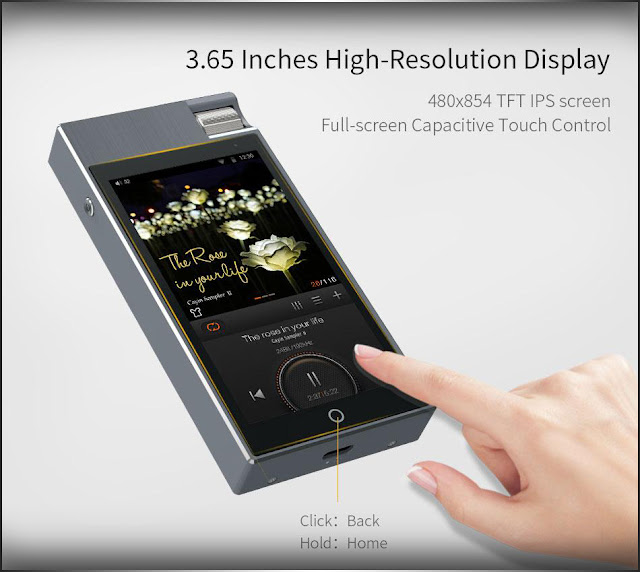




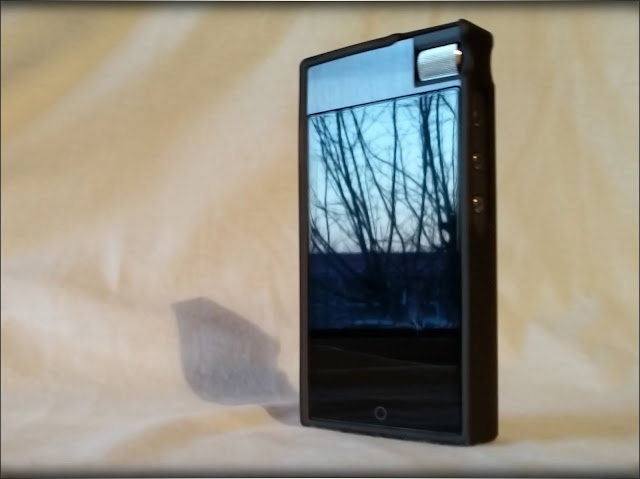








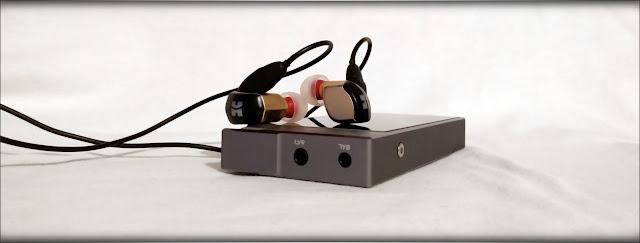
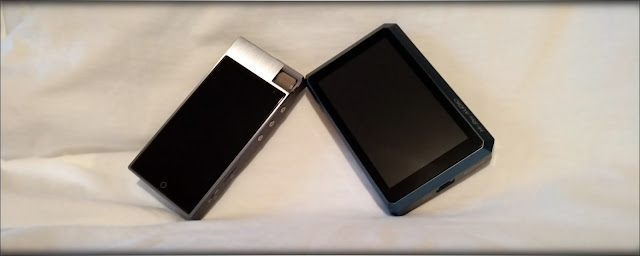
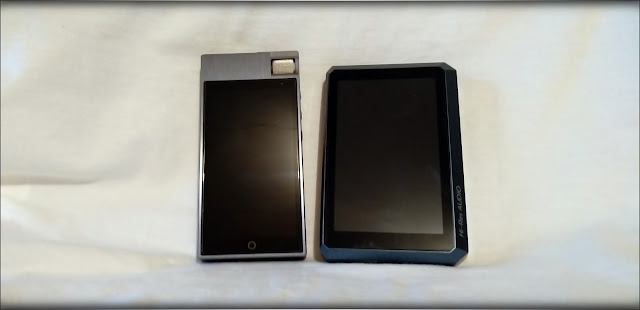











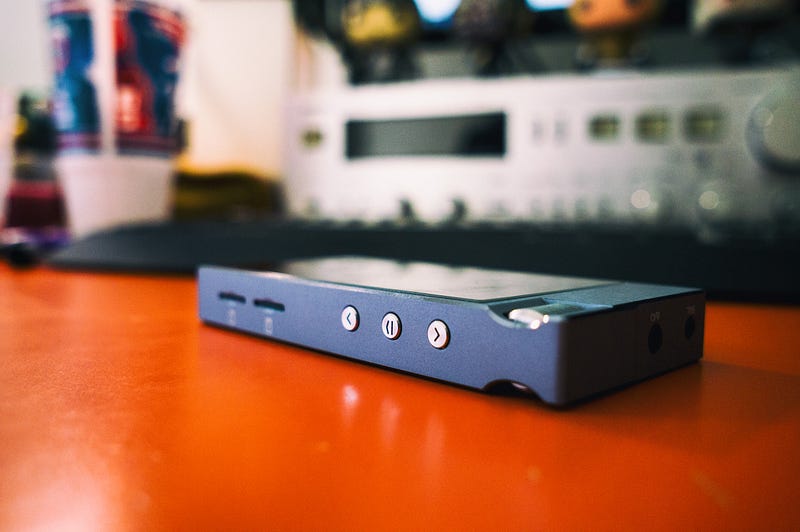
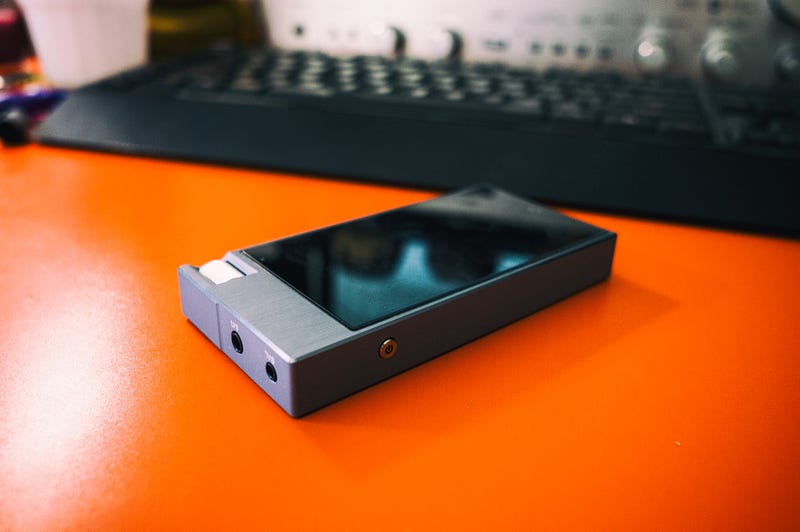
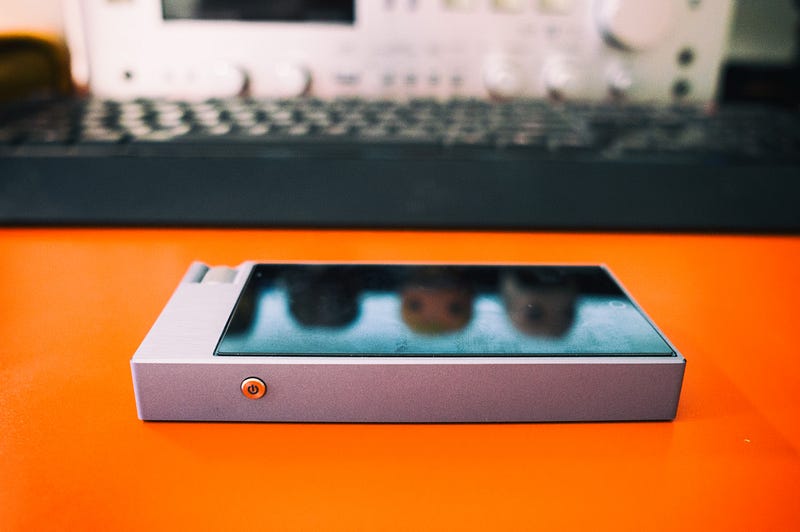

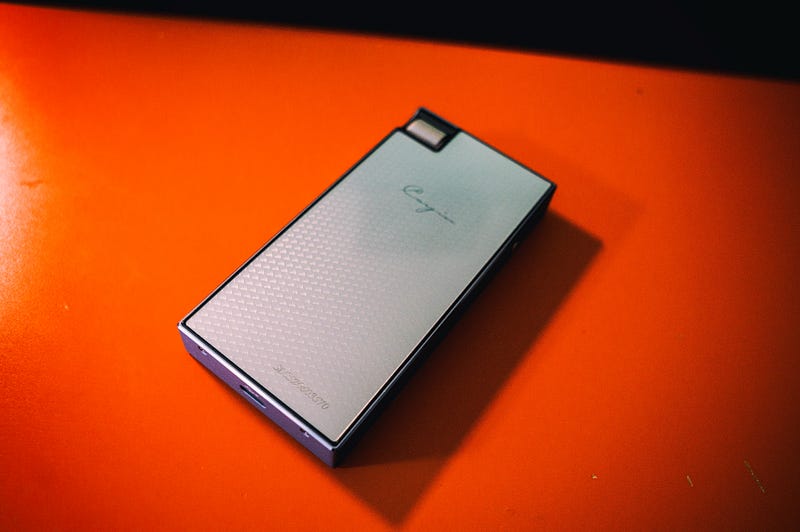
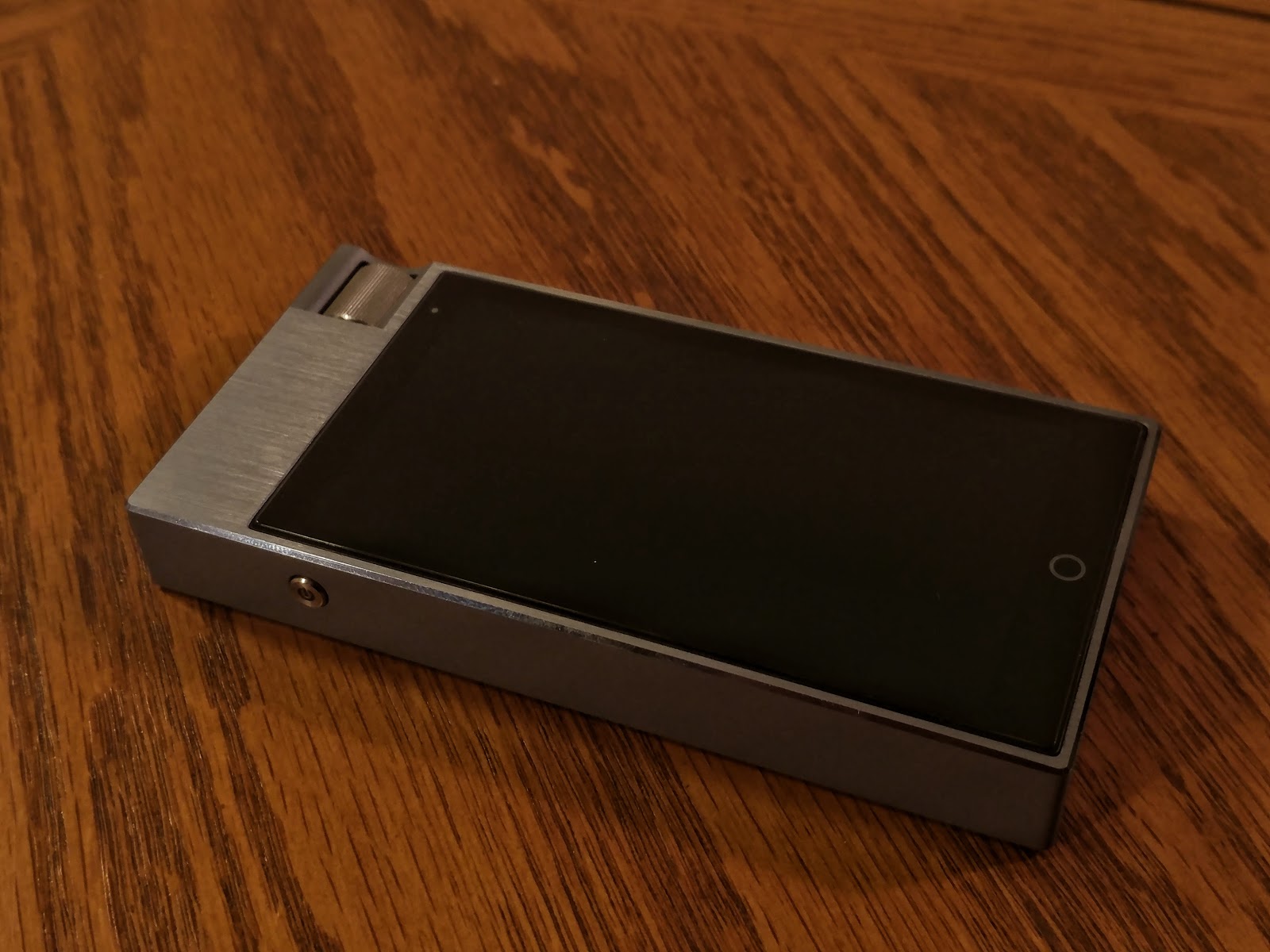
















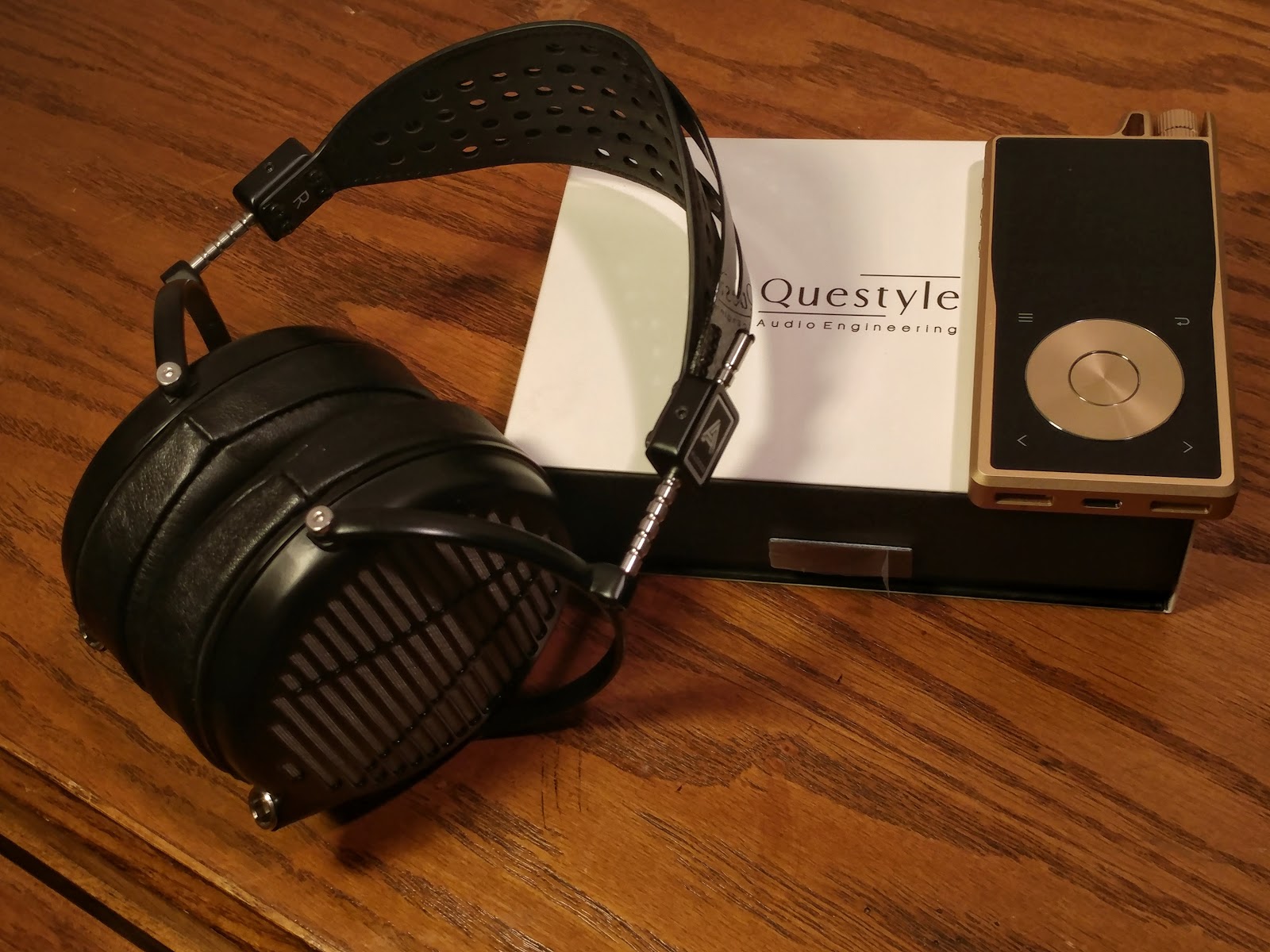




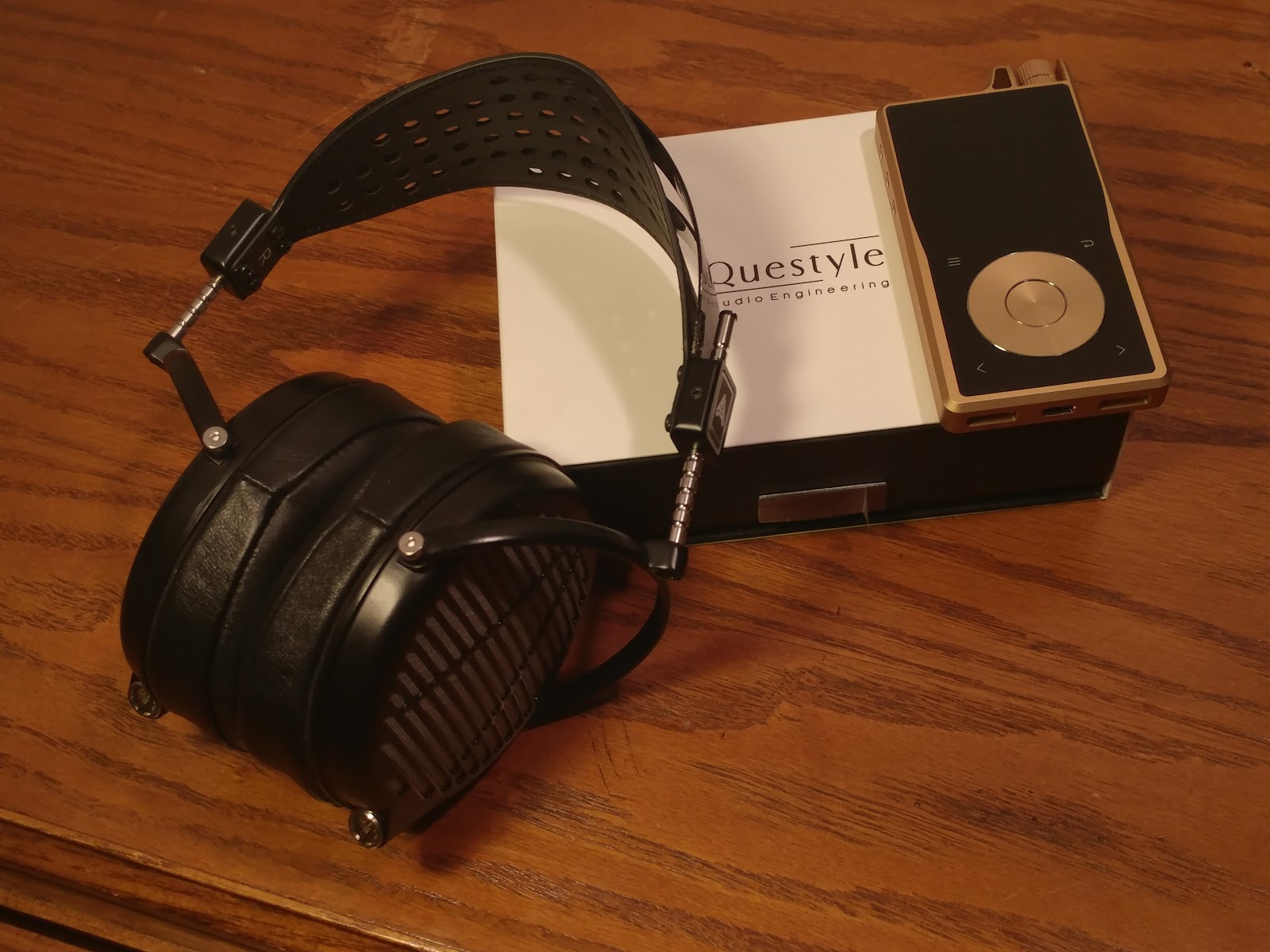







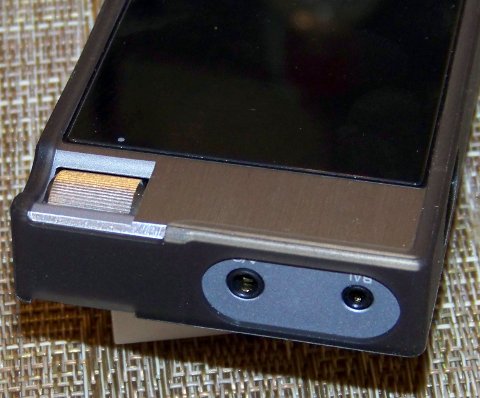










 . We need more like this
. We need more like this 


































































































